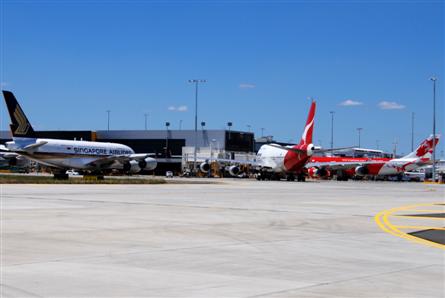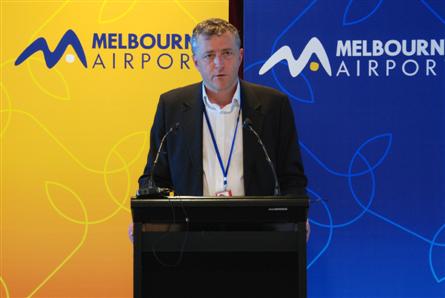Melbourne airport yesterday officially opened the first phase of its international terminal expansion, a new wing connected to the main terminal.
This A$108 million ($100 million) wing adds five gates to the terminal's previous eleven. Three of those new gates are already in place and the remaining two will be added as needed, likely over the next 3-5 years, Melbourne airport officials disclosed yesterday at the official opening.
The new wing is part of a A$330 million project in the international terminal that will also see streamlined passenger flow through security and immigration, new retail and food outlets, and additional baggage carousels by late 2011, they add.
Two of the new gates have dual aerobridges that can handle Airbus A380s, including docking to one upper deck door. Alternatively, the aerobridges can service two smaller aircraft. There are already two other A380-capable gates in the main terminal.

The new wing and two gates in the main terminal offer pre-conditioned air and ground power, enabling parked aircraft to switch off their auxiliary power units, reducing cost and carbon emissions, say the airport officials.
The expansion underscores Melbourne airport's forecast growth. This year the number of airlines serving Melbourne airport will increase to 26 from 21. Qatar Airways and Viva Macau, for example, will start services next week. Privately-owned company Australia Pacific Airports Corporation operates Melbourne airport.
Melbourne airport CEO Chris Woodruff attributes Melbourne's growth to three reasons. First, it has no curfew, unlike rival Sydney airport. Second, its terminals are all co-located, enabling short transfers. Sydney and Brisbane have their international terminal located separately from domestic terminals, requiring passengers to take shuttle buses between the two. Third, Melbourne boasts heavily discounted landing fees from competing airports, upwards of 50% off, he adds.

Melbourne airport CEO speaking at the event
"We run our business being quite mindful of the fact airlines operate in a thin margin business and we need to charge an appropriate amount for services," says Melbourne airport executive general manager strategy, asset, and planning Nathan Agnew.
While Melbourne has now officially opened its new wing, the airport is also investigating alterative energy sources. This is partly because about 80% of the state's electricity is generated by burning coal. Agnew expects the airport within five years to generate power from wind, solar, or gas.
Melbourne airport is also undertaking a significant apron and taxiway expansion programme to ensure congestion does not become an issue, say airport officials. The works will also support the long-term plan, at least twenty years out, of giving the airport's two intersecting runways parallel partners, they say.
These works will help facilitate medium and long-term terminal expansion. The airport master plan calls for the international terminal's new wing to be expanded to the north to accommodate six more aerobridges.
Terminal one, a domestic terminal leased by Qantas Airways group through to 2018, could be expanded at the carrier's discretion, say airport officials. Terminal three, a domestic airport utilised by Virgin Blue and Regional Express, has a significant surplus of capacity and would likely not be expanded in the near future, they add.
Source: Air Transport Intelligence news























